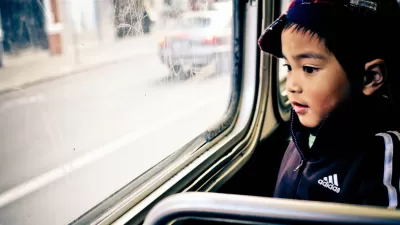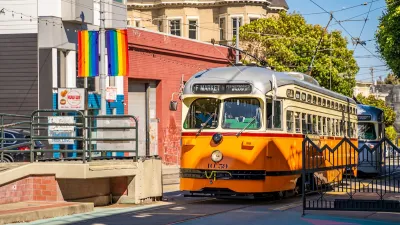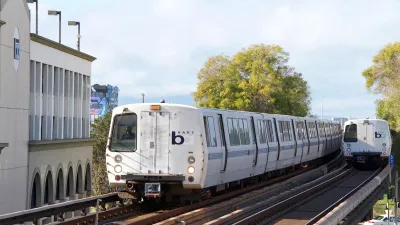In Minneapolis and San Francisco, public transit agencies are considering loyalty programs to boost ridership.

Sallie Burnett, business consultant, argues that loyalty programs like those used by airlines, hotels, and other businesses could help increase transit ridership. She points to what she sees as successful pilot programs in Minneapolis and San Francisco. "One example is Minnesota's Ride to Rewards programs, the first public transit frequent rider program in the nation," Burnett writes in Forbes. 80% of participants in that program said the perks they accrued riding transit would make them more likely to ride in the future.
Rewards programs could also be used to shift demand, "BART Perks was a test program conducted in the Bay Area that experimented with offering customers rewards for using transit outside of peak travel times. It lasted six months and encouraged participants to shift their commute away from the peak time of 7:30 a.m. Nearly twice as many people signed up than predicted," Burnett writes. The program also had the secondary benefit of getting people to post about their commutes on social media pages. Connecticut and Nashville transit agencies have also experimented with loyalty programs.
Burnett think the industry has an opportunity to take advantage of a tactic that, when properly implemented, has proven in other industries to be successful.
FULL STORY: Can Loyalty Programs Reverse Declining Public Transit Ridership?

Trump Administration Could Effectively End Housing Voucher Program
Federal officials are eyeing major cuts to the Section 8 program that helps millions of low-income households pay rent.

Planetizen Federal Action Tracker
A weekly monitor of how Trump’s orders and actions are impacting planners and planning in America.

Ken Jennings Launches Transit Web Series
The Jeopardy champ wants you to ride public transit.

Crime Continues to Drop on Philly, San Francisco Transit Systems
SEPTA and BART both saw significant declines in violent crime in the first quarter of 2025.

How South LA Green Spaces Power Community Health and Hope
Green spaces like South L.A. Wetlands Park are helping South Los Angeles residents promote healthy lifestyles, build community, and advocate for improvements that reflect local needs in historically underserved neighborhoods.

Sacramento Plans ‘Quick-Build’ Road Safety Projects
The city wants to accelerate small-scale safety improvements that use low-cost equipment to make an impact at dangerous intersections.
Urban Design for Planners 1: Software Tools
This six-course series explores essential urban design concepts using open source software and equips planners with the tools they need to participate fully in the urban design process.
Planning for Universal Design
Learn the tools for implementing Universal Design in planning regulations.
Heyer Gruel & Associates PA
Ada County Highway District
Institute for Housing and Urban Development Studies (IHS)
City of Grandview
Harvard GSD Executive Education
Toledo-Lucas County Plan Commissions
Salt Lake City
NYU Wagner Graduate School of Public Service





























